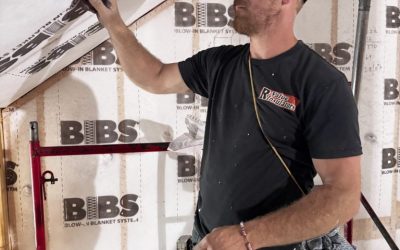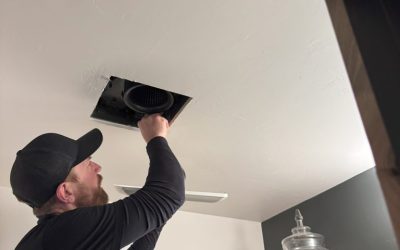At RVI, our commitment lies in educating homeowners and builders about the best insulation practices, especially when it comes to making informed decisions for a new build. We recently compiled a list of the most-Googled questions regarding residential insulation, and will be answering those questions in upcoming blogs.
Today, let’s talk about the importance of the R-Factor, which refers to the measure of resistance to heat flow. This can make all the difference in energy efficiency and comfort. We’ll dive into what defines a good R-Factor in insulation, explore the differences between common R-Values, and examine the efficiency of various insulation materials, including why Blow-In Blanket®️ (BIBS) Insulation is a leading choice.
Watch this video to learn more: R-Value and the Benefits of BIBS® vs. Batting Insulation
What is a Good R-Factor in Insulation?
A high R-Factor in insulation indicates superior performance, which is especially crucial in areas that experience big swings in weather. However, the effectiveness of insulation isn’t solely dependent on R-Value alone, but also on proper air sealing.
Air sealing is the most critical factor in achieving high-performance homes. Without it, even the most robust insulation can fall short. Ideally, a home should have an R-Factor of 60 in the attic and 30 in the walls, to ensure optimal energy efficiency and comfort.
What is the Difference Between R13 and R21 Insulation?
When comparing R13 to R21 insulation, the variance represents a substantial difference in thermal resistance. Moving from an R13 to an R21 insulation means gaining a higher resistance to heat loss, contributing to a more energy-efficient and comfortable living space.
Sam Hartmann notes that the right insulation density, like that found in BIBS®, can prevent air circulation within the cavity, significantly affecting the R-Value effectiveness.
What is the R-Value of USA Insulation?
In the USA, popular insulation types include cellulose and fiberglass, known for their versatility and thermal performance. While the R-Value can vary among insulation types, focusing on products that offer superior R-Values – such as BIBS® insulation with an R-Value of 4.2 per inch – can ensure that homes are well protected against energy loss. This attention to insulation density and effectiveness is crucial for maintaining optimal interior temperatures regardless of the season.
Is R5 Insulation Good?
R5 insulation falls far short in residential settings. However, incorporating R5 sheathing on the exterior walls, combined with high-quality wall cavity insulation, can enhance the overall thermal resistance of a home. For walls, we recommend insulating with BIBS® to achieve an R-Factor of 23. This blend of exterior sheathing and dense interior cavity insulation envelops the home in a consistent layer of thermal resistance, crucial for energy efficiency and comfort.
We hope this helped untangle the complexities of insulation R-Factors. To make your new house as energy-efficient as possible, contact the building science experts at RVI!



